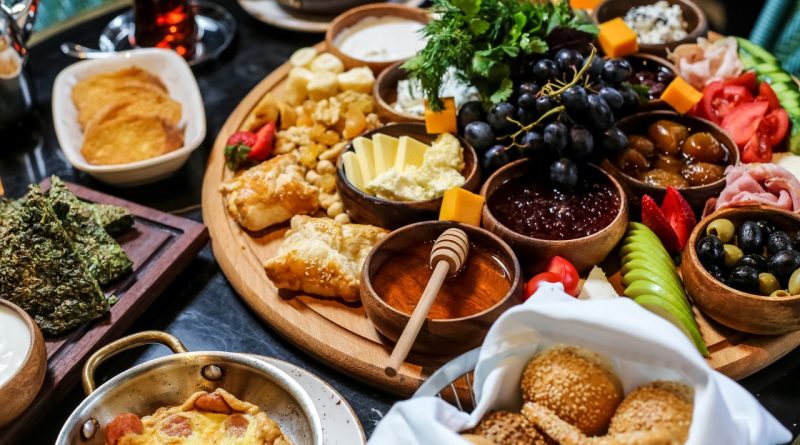How to Build a Well-Stocked Pantry for Home Cooking
A well-stocked pantry is the backbone of any successful home kitchen, enabling you to whip up a variety of meals without frequent trips to the grocery store. By selecting the right ingredients and organizing them effectively, you not only save time but also enhance your cooking experience. This guide will outline the essentials of creating a pantry that supports your culinary ambitions, whether you’re a novice cook or a seasoned chef.
Understanding the Basics of a Well-Stocked Pantry
A well-stocked pantry goes beyond merely having ingredients on hand; it’s about curating a selection that supports a range of recipes and dietary preferences. To achieve this, consider your cooking habits and the types of meals you frequently prepare. For example, if you enjoy Mediterranean cuisine, you may want to focus on stocking olive oil, canned tomatoes, and a variety of herbs and spices. Conversely, those who prefer Asian dishes may prioritize soy sauce, rice, and sesame oil.
Another crucial aspect of building a pantry is to choose ingredients that have a longer shelf life. Non-perishable items such as canned goods, dried beans, and grains can be stored for extended periods, making them a practical choice for stocking up. Additionally, consider seasonal variations and adjust your inventory accordingly; some ingredients may be more beneficial to have on hand during certain times of the year.
Lastly, it’s essential to periodically assess and rotate your pantry items to ensure freshness. Ingredients like flour, nuts, and dried herbs can lose their potency over time. By keeping an inventory checklist and regularly updating it, you can minimize waste and ensure that your pantry remains a reliable source of cooking essentials.
Essential Staples: Grains, Legumes, and Pastas
When it comes to building a well-stocked pantry, grains, legumes, and pastas are the backbone of many home-cooked meals. A variety of grains should be included, such as rice (both white and brown), quinoa, and farro. Each offers unique textures and flavors that can serve as a base for salads, sides, or main dishes. Additionally, gluten-free options like millet or buckwheat can cater to specific dietary needs.
Legumes are another essential category to consider. Items such as lentils, chickpeas, and black beans are not only nutritious but also incredibly versatile. They can be used in soups, stews, salads, or even blended into dips like hummus. Canned legumes are especially convenient, providing a quick protein source that requires minimal preparation. Dried legumes, while taking longer to cook, can be more economical and have a longer shelf life.
In the realm of pasta, aim for a selection that includes various shapes and types. Whole wheat, gluten-free, and traditional options should all have a place in your pantry. Pasta serves as a blank canvas for countless dishes, from simple aglio e olio to complex lasagnas. With these essential staples on hand, you’ll be prepared to create satisfying meals that cater to diverse tastes and dietary requirements.
Condiments and Spices: Elevating Your Home Cooking
Condiments and spices play a vital role in transforming ordinary dishes into extraordinary meals. Having a well-curated selection can drastically enhance flavors and elevate your cooking. Start with the basics: olive oil, vinegar (such as balsamic or cider), soy sauce, and mustard are essential for dressings, marinades, and cooking. These items are not only versatile but also foundational in many cuisines.
Next, focus on building your spice collection. A few key spices such as salt, pepper, garlic powder, paprika, cumin, and oregano can cover a wide range of flavors. As you become more comfortable in the kitchen, explore additional spices that intrigue you, such as saffron, turmeric, or five-spice powder. Whole spices tend to have a longer shelf life and can be ground as needed, ensuring freshness and potency in your dishes.
Finally, don’t overlook the importance of fresh herbs. While they have a shorter shelf life than dried spices, they can dramatically enhance the flavor profile of a dish. Consider growing your own herbs, such as basil, cilantro, or parsley, either indoors or outdoors, for a constant supply. Alternatively, you may want to keep a selection of dried herbs in your pantry to use when fresh options aren’t available.
Organizing Your Pantry for Maximum Efficiency and Access
Once you have a selection of ingredients, the next step is organizing your pantry to ensure maximum efficiency. One effective method is to categorize items by type, such as grouping grains, legumes, condiments, and spices together. This allows you to quickly locate what you need when preparing a meal. Clear containers or labeled jars can further enhance organization and provide a visual cue about the ingredients you have on hand.
Another organizing tip is to use the “first in, first out” (FIFO) method. Place newer items behind older ones to ensure that you use up ingredients before they expire. This practice not only prevents waste but also encourages you to utilize your pantry items more effectively. Consider adding a small chalkboard or notepad inside your pantry door to jot down items that are running low or need replenishing.
Lastly, consider the height and accessibility of your pantry shelves. Keep frequently used items at eye level for easy access and lesser-used ingredients on higher shelves. If space allows, use tiered shelving or lazy Susans to maximize vertical space and ensure that all items are visible and reachable. A well-organized pantry is not only visually appealing but also contributes to a more enjoyable cooking experience.
Creating a well-stocked pantry is a worthwhile endeavor that can significantly enhance your home cooking. By understanding the basics and carefully selecting essential staples, condiments, and spices, you set the stage for culinary creativity. Moreover, organizing your pantry efficiently ensures that you can easily access the ingredients you need, saving you time and reducing stress in the kitchen. With these strategies, you can enjoy a more fulfilling cooking experience and the satisfaction of preparing delicious meals at home.
